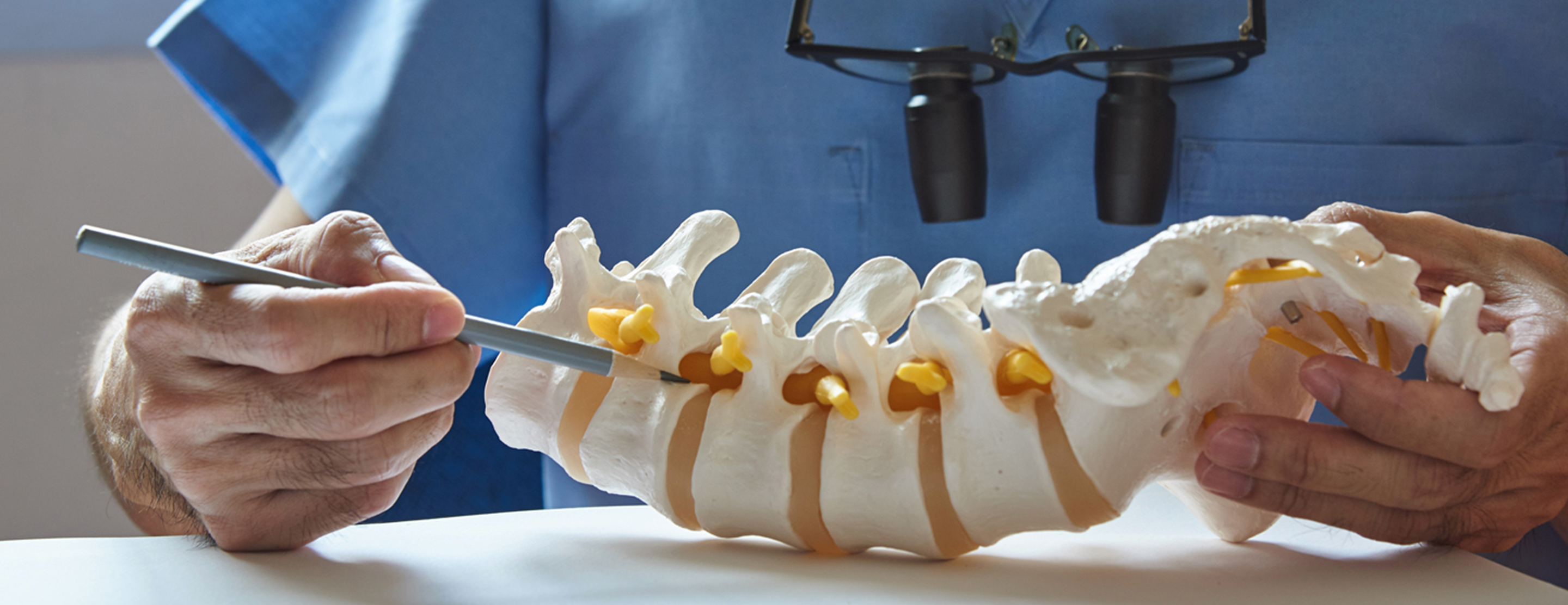Artificial disc replacement surgery is offered at our Spine Center, where world-renowned specialists in orthopedics, neurosurgery and other specialties work together to treat complex spinal problems, including those that have failed previous treatment and difficult-to-diagnose conditions. We offer the full range of non-surgical and surgical therapies for spinal conditions.

Disc Replacement
If you suffer from low back pain, also called lumbar back pain, you are not alone. More than 65 million people each year in the U.S. experience low back pain. This may be caused by degenerative disc disease (DDD), a disorder of the spine and intervertebral discs.
If you suffer from chronic back pain caused by DDD, which does not respond to non-surgical therapies, artificial disc replacement may be considered. Recent studies have shown that artificial disc replacement can significantly reduce chronic low back pain in select patients. Compared to techniques such as spinal fusion surgery, disc replacement has the advantage of maintaining fuller motion in the spine, which may lessen the likelihood of problems developing at adjacent levels in the spine. While spinal fusion surgery is recommended for some patients with DDD, advisability for patients and techniques remain controversial and the results can be variable. In some cases, the surgery decreases motion in the spine and transfers stress to adjacent levels. In addition, the ability of the bone to heal varies and occasionally may not be successful.
Preparation
If you suffer from chronic low back pain caused by degenerative disc disease (DDD) that does not respond to other non-surgical therapies, you may be eligible for artificial disc replacement surgery. However, this procedure is not recommended for everyone. Based on your symptoms, your doctor will determine the best course of treatment for you.
Artificial disc replacement may be recommended for patients between the ages of 18 and 60 with DDD at one or two levels of the spine whose condition has not responded to at least six previous months of non-surgical therapy. Patients who have other spinal abnormalities such as spinal stenosis, spondylolisthesis and scoliosis are usually not candidates for this surgery. Patients with osteoporosis may not have strong enough bone to support a disc replacement. Based on a series of tests, your doctor will determine if artificial disc replacement surgery is an option for surgery and the most effective treatment for your condition.
Before artificial disc replacement, your doctor will discuss the procedure with you in detail, answering any questions you may have. Your doctor will also inform you of any special requirements that need to be completed before your surgery.
Procedure
Although disc replacement is relatively new in the U.S., artificial discs have been implanted successfully in Europe and South Africa for many years. Currently, there is one disc replacement that has been approved by the FDA for implantation in the U.S., although there are several others that are being studied and are awaiting FDA approval.
During the procedure, the degenerated disc is removed and any collapse of the disc is restored. The artificial disc is then implanted. This is an inpatient procedure performed with general anesthesia and requires two to three days in the hospital. The surgery is performed from the front of the spine, that is, through the abdomen, and major internal structures must be moved to the side during surgery to allow safe implantation of the device.
Complications
Like any surgery involving general anesthesia, there are some risks associated with artificial disc replacement. These may include:
- Bleeding
- Nerve injury
- Infection
- Sensitivity to the artificial disc's materials
- Breakage or wearing out of the disc's components
- Dislocation of the implant
- Damage to the vertebra to which the disc replacement is applied
- Failure to improve following the procedure
Your surgeon will discuss these risks with you before surgery.
Recovery
Most patients return to regular daily activities between six and eight weeks after disc replacement surgery. Rehabilitation may include a self-directed exercise program, such as walking and stretching for the first four weeks after surgery. After this period, a strengthening program may also be recommended. Resuming sports and other physical activities will be discussed with your doctor.
Most patients are able to function at home without extra assistance. However, it is recommended that you prepare your home and meals in advance for the first few days after returning home from the hospital. Patients may take showers five to seven days after surgery and a shower stool is recommended.
Follow-Up
Typically, patients are seen at four to six weeks following disc replacement surgery and then at three months, six months and one year. After the first year, patients are seen once every year or two for life to ensure that the implant is functioning properly and has not worn out or migrated.
UCSF Health medical specialists have reviewed this information. It is for educational purposes only and is not intended to replace the advice of your doctor or other health care provider. We encourage you to discuss any questions or concerns you may have with your provider.








